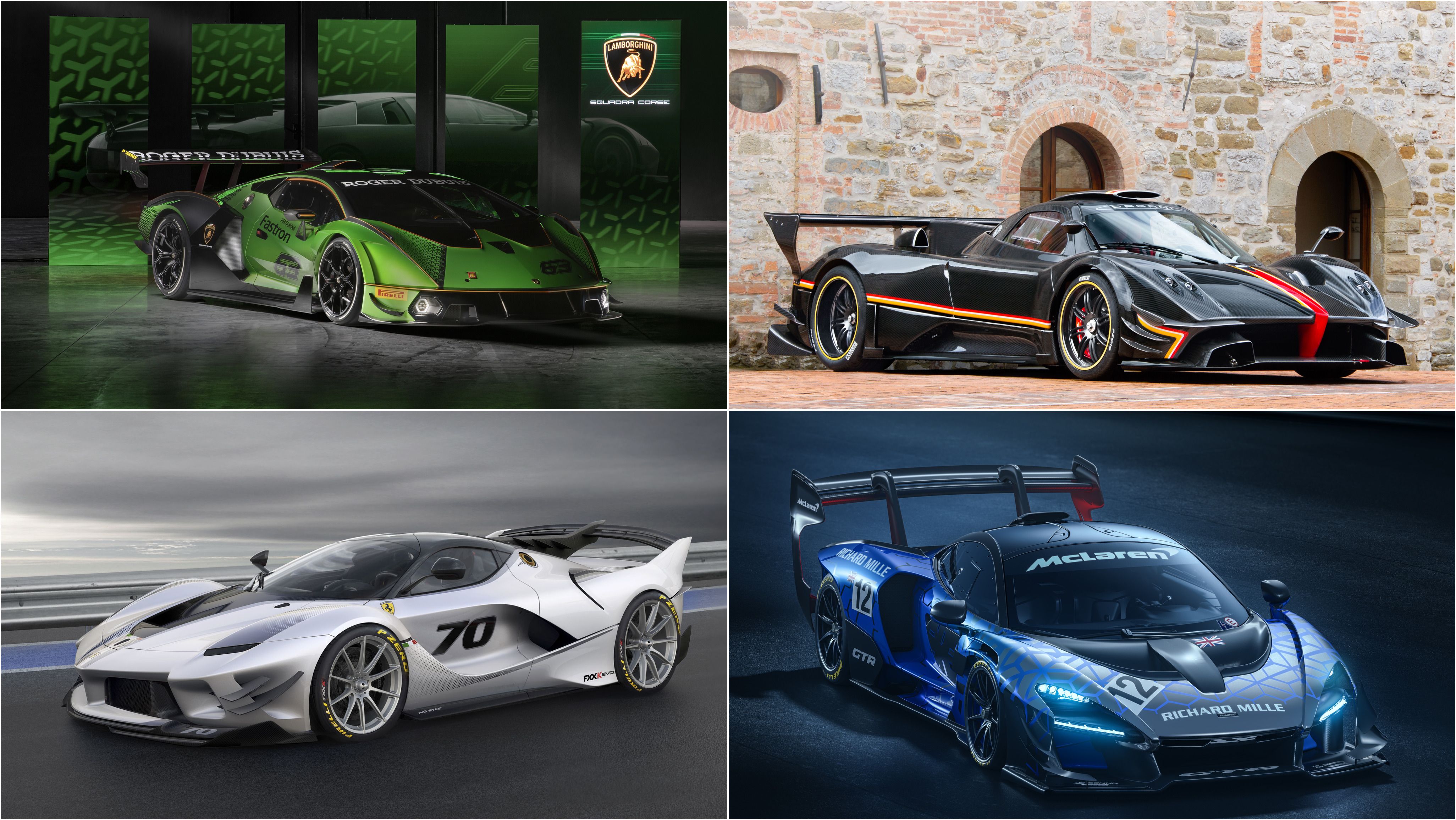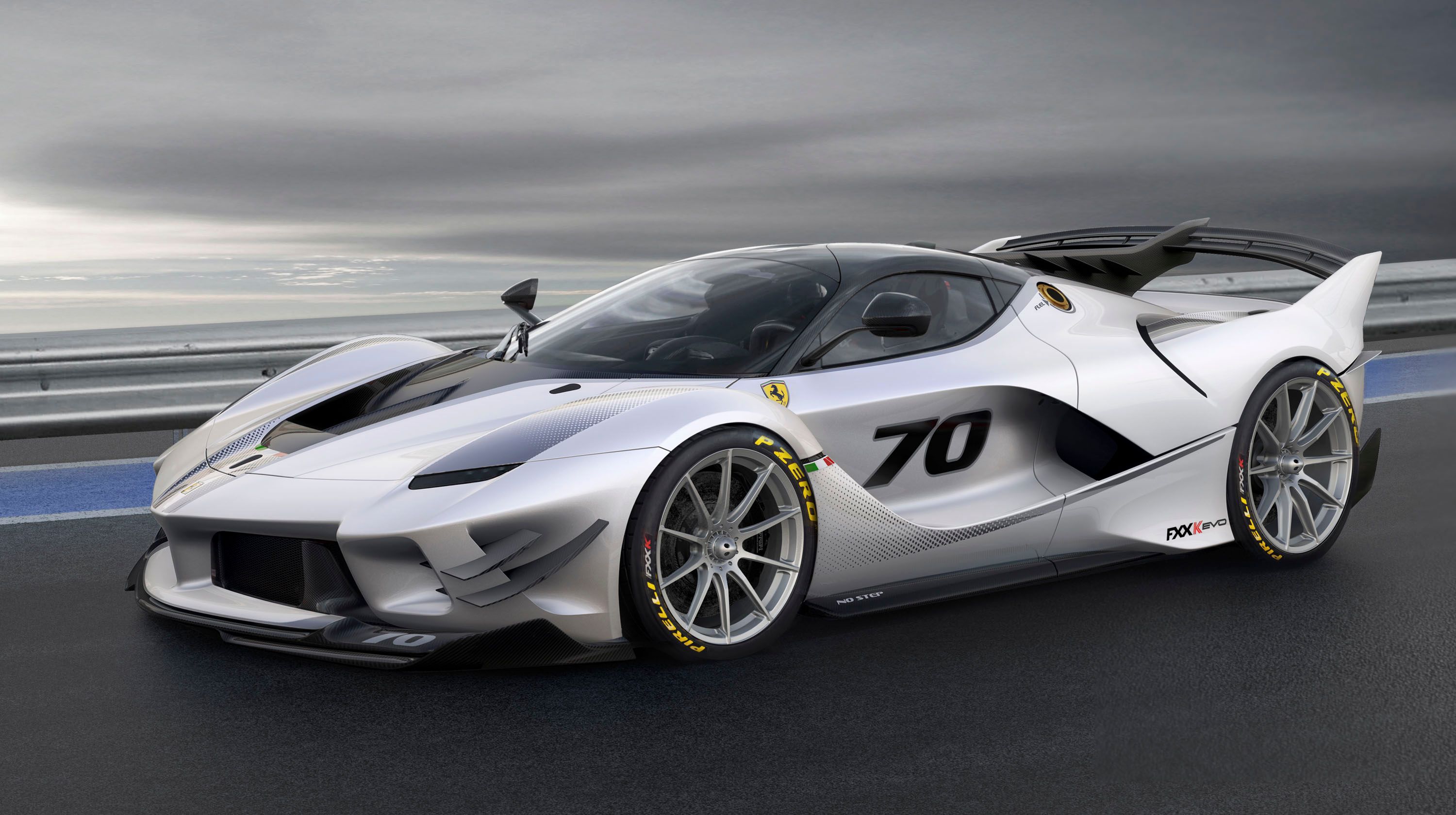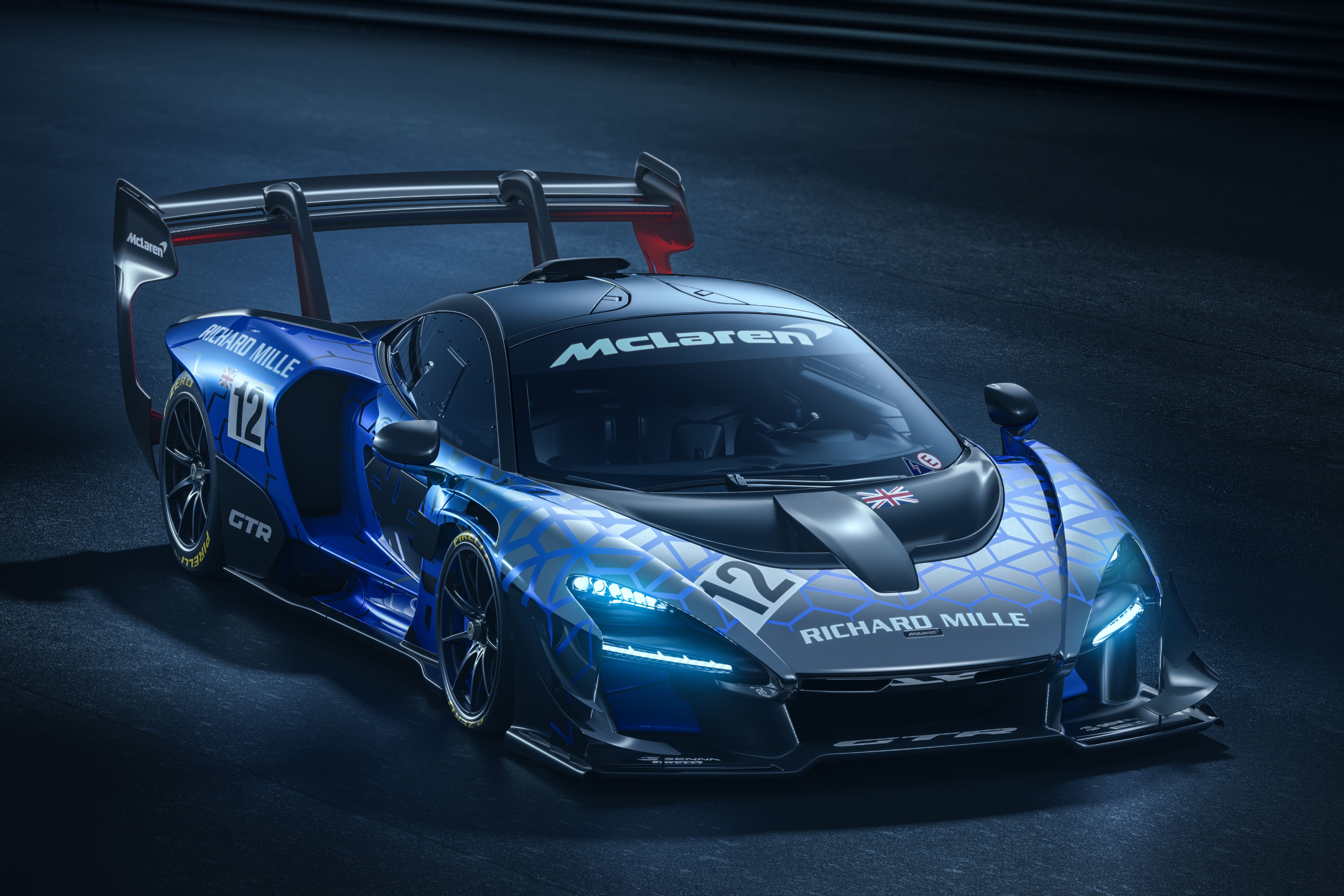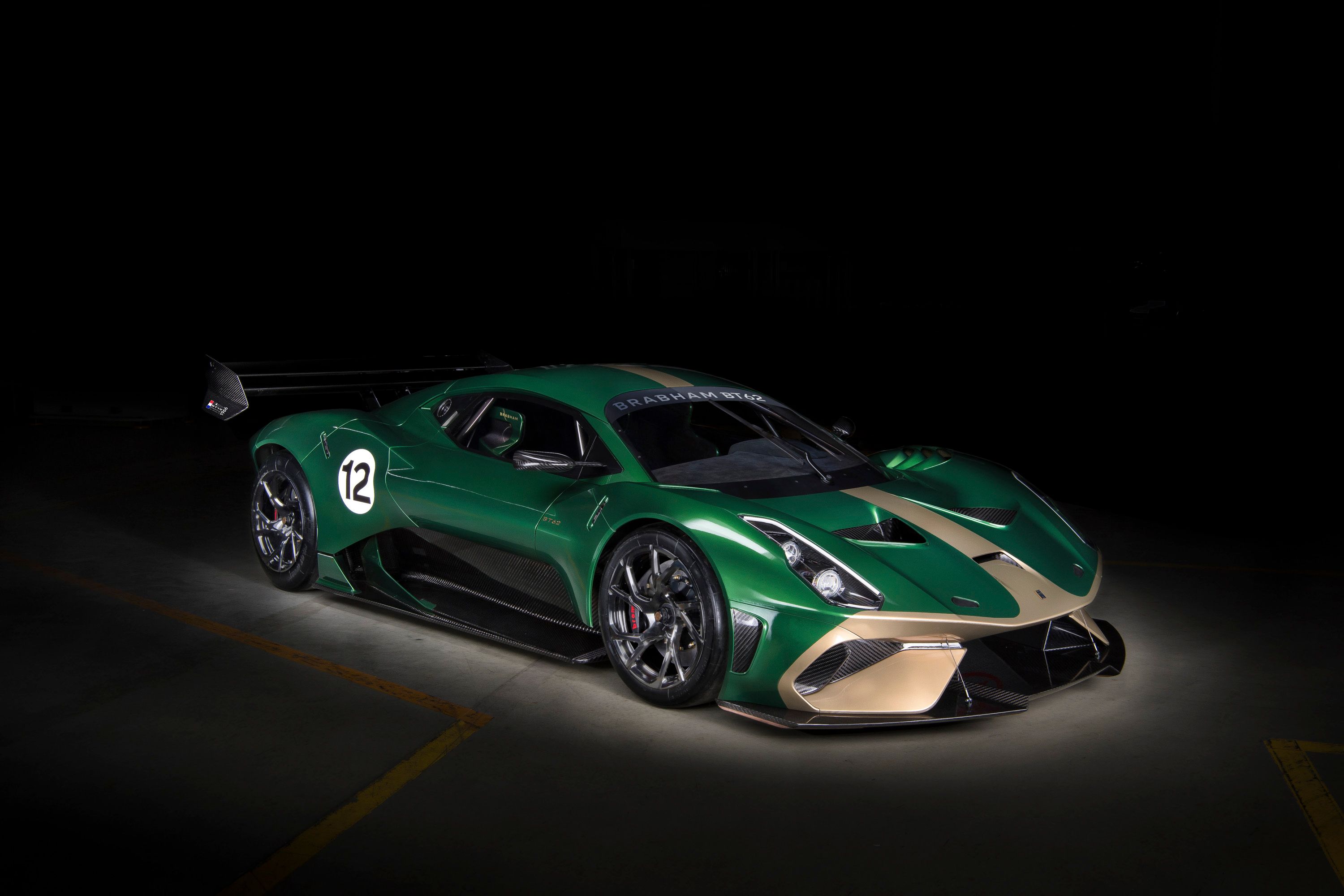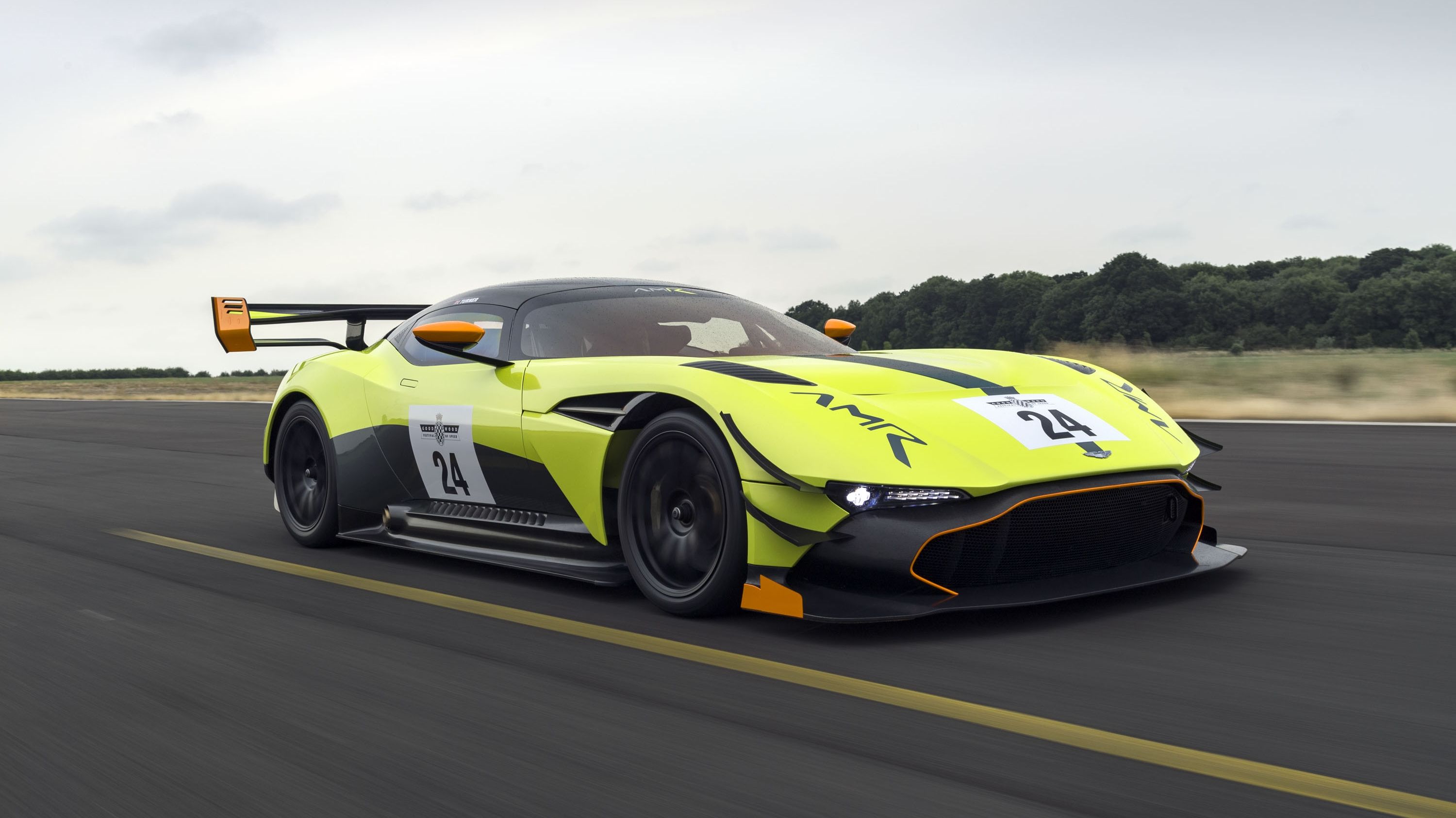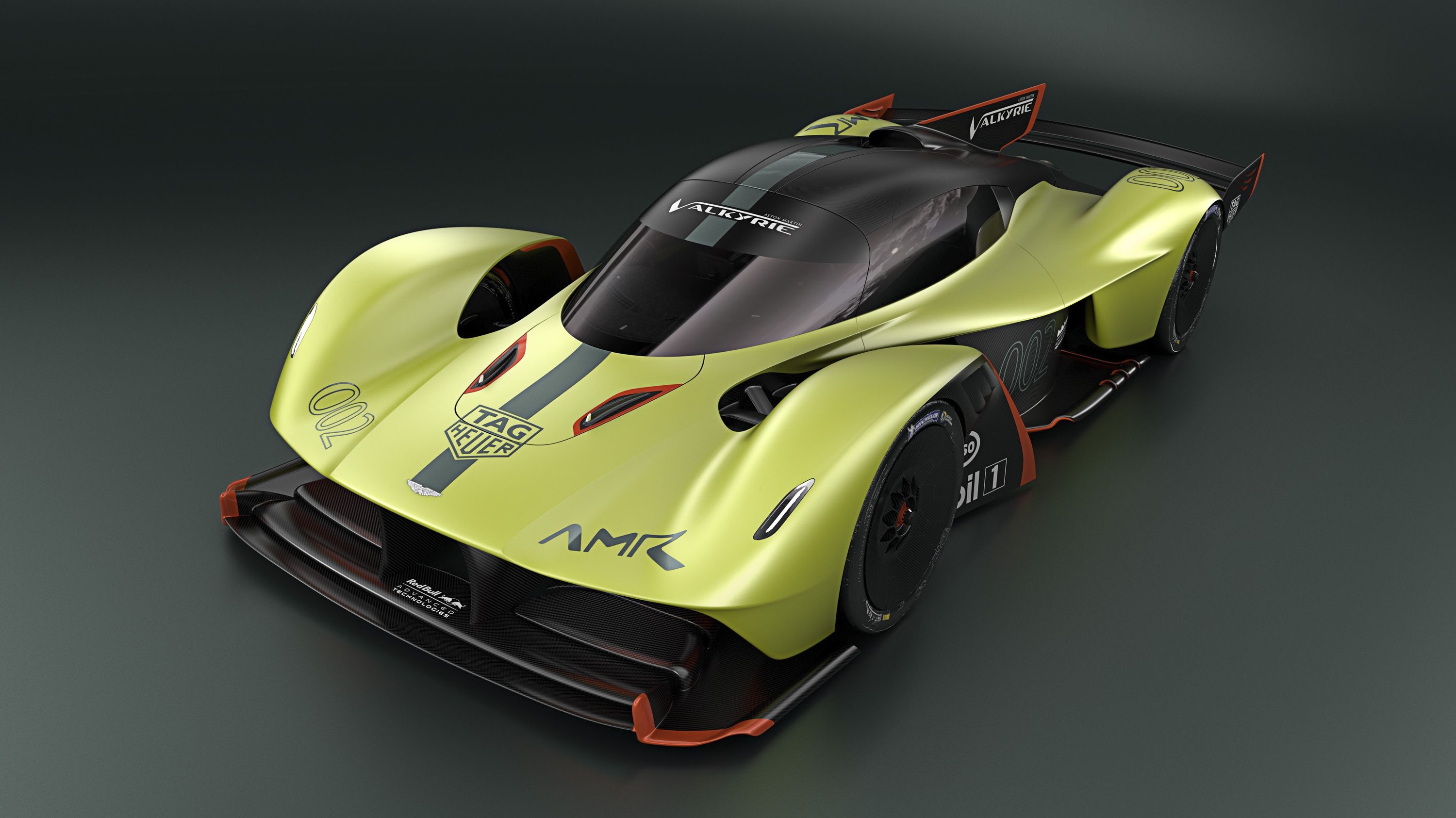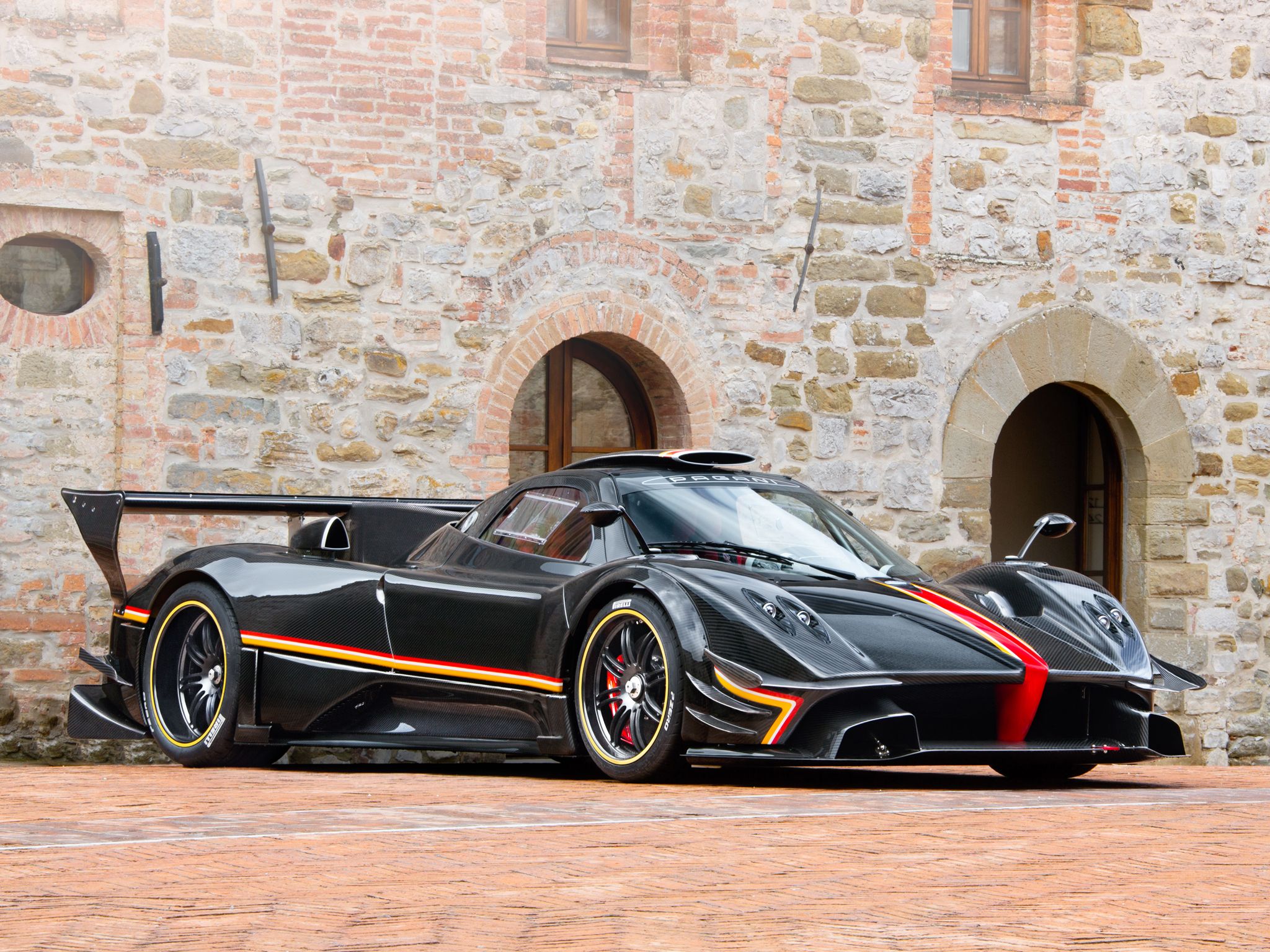Remember all the headlines that were written last week when we first caught glimpse of Lamborghini's Essenza SCV12? Most had something to do with how this thing, probably the last mid-engined hypercar from Lamborghini to be powered by the venerable N/A V-12, can't be driven on the road. It is merely the latest in a long line of track-bound hypercars that boutique and not-so-boutique automakers have been churning out in the past decade or so to appease to its wealthy clientele in look for some thrills and spills.
But isn't that a bid sad? Isn't it sad that 800-odd-horsepower beasts complete with some of the most outrageous aero kits ever seen that make even a Le Mans-ready grand tourer seem pedestrian are confined to some private track day events? It's not that we can't see them in action, but we never really see what they are capable of. They're never really pushed to their absolute limits because what's missing is competition. Nobody is really racing these cars although they are race cars, so here's what we thought: what if there was a racing series dedicated to track-only hypercars? An arena for fire-spitting monsters that don't fit within the tight cubicles of FIA's rulebooks.
A little bit of day-dreaming never hurt anyone, right?
Everyone who watched last weekend's British Grand Prix at Silverstone inevitably had to fight the desire to just dose off as yet another snooze fest of an F1 race was unfolding on the 'Home of British Motorsport'.
It was towards the race's end but it was enough to ruin a few people's races including Mercedes' Valtteri Bottas. Hamilton too suffered a puncture but his gap to Dutchman Max Verstappen was big enough that he could drive almost a whole lap of the GP loop on three wheels and still win.
At the end of the day, everybody was enthralled by that finish but, by and large, the race was boring. Here you have 900-horsepower, ultra-fast machines driven by the world's best drivers yet, barring a twist in the weather or some other unlikely turn of events, the GPs roll by without much of a storyline to go with them. Then there's the World Endurance Championship, the flagship series for long-distance auto racing. Here, the likelihood for things to go wrong is amped up a notch by the fact that you have four classes of cars on track at the same time but, at the end of the day, not much happens.
The lower prototype class is more interesting but that's merely because everyone who cares about winning has bought an ORECA. And then there's the GTs. Two years ago, the GT class was a place for Chevy, Porsche, BMW, Ford, Ferrari, and Aston Martin to do battle.
The cars were based on production models, albeit with a re-thought aero package and all the racing bits and pieces you expect. They were and are fast, despite developing no more than 510-550 horsepower depending on the size of the air restrictors, but they were also expensive and the breed started dying out. Ford and BMW pulled the plug on their programs and Porsche will do so over in the American IMSA series at year's end which sparked all sorts of doom and gloom discussions in the paddocks.
People love GT racing, which is why GT3 racing has been going strong for the better part of 15 years already, more than just about any set of GT regulations ever. But, looking back, fans seem to want something more. Cars that are more powerful, cars that are even quicker, cars that spit flames (I can attest from first-hand experience that GT3 cars barely ever exhibit fire out the exhaust pipe), and that look even more insane.
Everyone who was around in the late '90s has an idea of what was the GT1 era and even the FIA knows that was a bit of a golden era as the new prototype regulations I've mentioned before somewhat aim to revive the spirit of prototypes that at least resemble road cars. Even the later GT1 cars of the noughties that were effectively derived from the GT2 cars of the late '90s were more exciting to watch.
Sharing the tarmac at once were Saleens, Ferraris, Maseratis, Lamborghinis, Aston Martins, Corvettes, and even Pagani and Koenigsegg tried to get in. Most of these manufacturers also offer (or have offered) GT3 cars but they also have something else that is a cut above and I'm talking about track-only hypercars.
They look cool, sound awesome, and, because there's no rulebook holding them back, they're more powerful and more insane-looking than most racing cars. You'll see them scorching their tires at track days the world over but never together, racing in anger. That's where this novel race series comes in. The idea is simple, bring in all the expertise of the racing departments that have built these cars and that anyway are helping private owners/race teams to run them and throw them all in the same paddock. Adjust some things here and there to level the playing field a bit let the boys and girls loose in the typical Pro/Am style with the owner sharing the car with a professional driver for added excitement. The races should be short and TV-friendly so a 50-minute format with a pit stop in the middle for swapping drivers is ideal and has been successfully put to the test many times over.
Now, having discussed the details, here are the likely contestants, in no particular order:
Ferrari FXX K Evoluzione
Everybody loves to joke around about the Ferrari The Ferrari aka the LaFerrari. It's part of the so-called 'Holy Trinity' of supercars from the mid-'10s and it packs a hybridized V-12 that makes it more powerful than both the McLaren P1 and the Porsche 918. In FXX K guise, however, the LaFerrari is even more powerful. Thanks to a reworked intake and a new exhaust. the FXX K develops 1,035 horsepower (86 more than the road-legal LaFerrari) and 664 pound-feet of torque. The body is even wider and there's a full-width diffuser out back as well as a splitter in the front. The package generates so much downforce that Ferrari originally fitted the FXX K with two smaller winglets above the fenders but the revised Evo version sports a full-width wing. The cool part is that 40 have been made. The not-so-cool part is that each cost $3 million and Ferrari gets to keep them.
Read our full review on the Ferrari FXX K Evoluzione
McLaren P1 GTR
You can't talk about the FXX K without mentioning the P1 GTR (I'm skipping the 918 RSR because it was never sold to any customers). The P1 GTR, however, was sold to the general public - a 58-person slice of the general public that is - so it has to be here. The already impressive aero package of the P1 has been reworked on the GTR and the most obvious addition is that of a huge, fixed rear wing. The car develops 1,455 pounds of downforce at 150 mph but it can go much quicker than that since the hybrid drivetrain that includes the 3.8-liter, twin-turbo V-8 has been tuned to deliver 986 horsepower. At $2.5 million a pop when new a few years ago, this is about 2.5 times more expensive than a GTE car.
Read our full review on the McLaren P1 GTR
McLaren Senna GTR
If you think 1,455 pounds of downforce isn't enough, there's always the Senna GTR which would, probably, be the choice for most of the guys going racing in our new-born series as, in comparison, the P1 GTR already starts to feel dated. That's mainly because McLaren designed the street-legal Senna to be the most extreme road car ever and to break track records every which way. Thus, the GTR version is even better. With 814 horsepower and 590 pound-feet of torque coming from a 4.0-liter V-8, it's not as powerful as the P1 GTR or the FXX K but aero efficiency is what matters in road racing and, with 75 units made, there's enough Senna GTRs out there for a few to make it onto our grid.
Read our full review on the McLaren Senna GTR
Brabham BT62
We wrote before that you can actually have Brabham make the BT62 road-legal for you but, by and large, Brabham's first new car in two decades is a dedicated track beast. It weighs under a tonne ( 2142 pounds dry) and Brabham's 5.4-liter V-8 produces 700 horsepower and 492 pound-feet of twist. Only 70 were said to be made at $1.5 million a pop and, unlike other cars on this list, the BT62 has actually raced as well as broken some lap records. But our race series will be more high-profile than the Britcar Endurance Championship methinks!
Read our full review on the Brabham BT62
Aston Martin Vulcan AMR Pro
The Vulcan, named after a Cold War-era strategic bomber, is the firm representative of the old school on our grid. For starters, the engine is in front of the cabin. It's also a V-12 and it breathes naturally and, moreover, it displaces an obscene seven liters. That's enough for an output of 820 horsepower, all sent to the rear wheels through an XTrac sequential 'box. The drivetrain is identical to that of the 'standard' Vulcan but the AMR Pro is the one people will go for if they want to race in our series because it's got a lot more downforce. There are canards up in the front, turning vanes as well as a slightly updated diffuser in the back and a few other aero updates that you have to be a total anorak to notice. 24 exist but we guess you can update an existing Vulcan to AMR Pro spec if you've got the money to do it.
Read our full review on the Aston Martin Vulcan AMR Pro
Aston Martin Valkyrie AMR Pro
Red Bull Racing and Aston Martin came together to make the ultimate road car (if for no other reason than to one-up Mercedes-Benz and its still-not-ready AMG One) and the name is, once again, of historic relevance. We still haven't seen one in private hands, though, but Aston Martin thought the Valkyrie is good enough to actually beat Toyota at Le Mans under that new ruleset up until it hit financial quicksand and the plug had to be pulled on the program. This means, however, that the track-only AMR Pro version of the Valkyrie can come and play in our series. In the middle of this spaceship of a car is the same 6.5-liter, N/A V-12 built by Cosworth and aided by a hybrid system but it's even more powerful in the AMR Pro. It weighs 2,205 pounds and boasts with a 1:1 power-to-weight ratio meaning the engine+hybrid system develop 1,000 horsepower. With ultra-grippy slicks and that insane aero package, 3.3 Gs mid-corner is the norm. We expect to peg back the Valkyrie quite a bit but just imagine the sound of the V-12 roaring alongside that of the Vulcan!
Read our full review on the Aston Martin Valkyrie AMR Pro
Pagani Zonda Revolucion
This could be considered the elder statesman on the gird as the Zonda Revolucion celebrates its seventh birthday this year but I just couldn't ignore it - especially since Horacio Pagani hasn't come up with a track-only Huayra (the BC can still be driven on public roads, as insane as that sounds). The Revolucion is an updated Zonda R and the R is, well, the most insane Zonda ever so you get the picture. Pagani, after the flop that was the Zonda GT, really spent time on the R and it shows. With a longer tail section, as well as extended front overhangs, the R and Revolucion generate lots of downforce. On top of that, it also features DRS (drag-reduction system) like an F1 car. Power comes from the well-known 6.0-liter Mercedes-AMG V-12 engine that is good for 789 horsepower and 538 pound-feet of torque in the Revolucion. A 0-60 mph time of 2.6 seconds is the result of a rigorous weight-loss program (just 2,270 pounds dry).
Read our full review on the Pagani Zonda Revolucion
Pininfarina EF7
Developed in conjunction with two-time F1 World Drivers' Champion Emerson Fittipaldi (hence the EF in the name), the EF7 will surely be one of the oddballs on the grid. Thanks to an N/A V-8 developed specifically for this project by HWA, the EF7 boasts with 592 horsepower and 310 pound-feet of torque. The premise behind the EF7 is "that it should “go fast, not need weeks of set-up, and not scare the wealthy owner." All that is fine but, for the intents of our racing series, HWA should strap a turbo to that V-8 because at least 700 horsepower and 500 pound-feet of torque will be needed if Pininfarina wants to fight for anything other than mid-field results in the series.
Read our full review on the Pininfarina EF7
Lamborghini Essenza SCV12
The last on the entry list is the newest of the bunch, namely Lamborghini's Aventador-based Essenza SCV12. No Maserati will take part because, frankly, cool as it may be, the MC12 Versione Corse is simply too old by now (it was released all the way back in 2008) but Lambo's Essenza hypercar is a perfect fit. Designed by Lamborghini’s Squadra Corse racing division, the SCV12 is said to also act as a testbed of sorts as Lamborghini's shown interest to join the LM Hypercar ranks and race at Le Mans sometime in the future. Until then, let's just take a look at the incredible aero package of the Essenza SCV12 and its specs. For starters, the engine is a naturally aspirated V-12 (maybe the engine's swan song) but that doesn't mean the hyper-Lambo will fall behind its turbocharged or hybridized brethren because the powerplant was tuned to deliver 819 horsepower (11 more than the Sian). Then there's the downforce: 1,200 kilograms (2,645 pounds) of it while traveling at 155mph. 40 will be made and Lamborghini should have enough expertise running Huracan GT3s to race it in our series.
Read our full review on the Lamborghini Essenza SCV12

